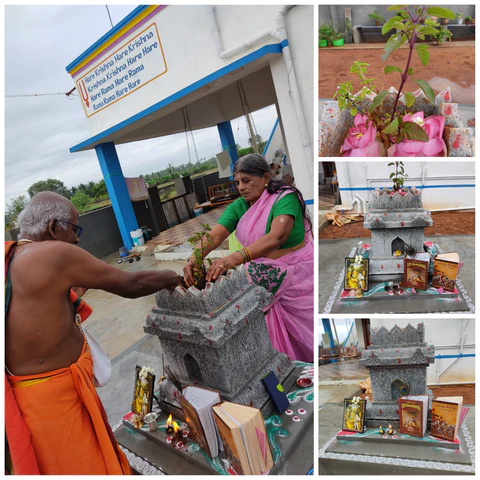Where to Place Tulsi Plant

5 Fast-Growing Vegetables to Start At Home
August 22, 2025
Plant Nursery near by me
August 25, 2025Where to Place Tulsi Plant for Health, Prosperity, and Positive Energy
The Tulsi plant, also known as Holy Basil, holds a special place in Indian households. Beyond its medicinal and spiritual value, Tulsi is considered sacred in Hindu culture. People believe that keeping a Tulsi plant at home brings positivity, health, and prosperity. However, simply having a Tulsi is not enough—placing it in the right spot is equally important.
In this blog, we’ll guide you on where to place Tulsi plant according to Vastu Shastra and traditional beliefs.
🌿 Importance of Tulsi Plant
-
Known as the “Queen of Herbs,” Tulsi has powerful healing properties.
-
It purifies the air and acts as a natural immunity booster.
-
Spiritually, it is considered a symbol of purity and positivity.
-
It is believed to attract blessings and remove negative energies.
✅ Best Directions to Place Tulsi Plant
1. North, East, or Northeast Direction
-
These directions are considered most auspicious for Tulsi.
-
Placing Tulsi here ensures good health and prosperity.
-
It helps attract positive vibrations and divine blessings.
2. Near the Entrance
-
Keeping Tulsi near the entrance invites positive energy into your home.
-
It acts as a natural protective shield against negativity.
3. In the Courtyard (Aangan)
-
Traditionally, Tulsi is planted in the courtyard with a Tulsi Vrindavan (a small decorative structure).
-
It creates a spiritual environment in the house.
🚫 Places to Avoid for Tulsi Plant
-
South direction: Considered inauspicious as it attracts negative energy.
-
Near toilet or bathroom: It disrespects the sacredness of the plant.
-
Under a shadow: Tulsi requires good sunlight for growth and positivity.
🌞 Care Tips for Tulsi Plant
-
Water Tulsi every morning, but avoid overwatering.
-
Ensure at least 4–6 hours of sunlight daily.
-
Light a diya (lamp) near the Tulsi in the morning and evening for positive energy.
-
Avoid plucking leaves on Sundays and full moon days, as per tradition.

